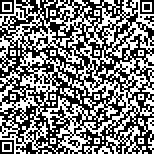| Quote
: |
陈琇萌,俞小敏,肖洁.尿毒清颗粒抑制大鼠肾脏间质纤维化作用靶点研究[J].湖南中医药大学学报英文版,2017,37(1):33-37.[Click to copy
] |
|
| |
|
|
| This paper
:Browser 2340times Download 646times |
| 尿毒清颗粒抑制大鼠肾脏间质纤维化作用靶点研究 |
| 陈琇萌,俞小敏,肖洁 |
| (广州医科大学附属第一医院肾内科, 广东 广州 510120) |
| 摘要: |
| 目的 研究尿毒清抑制大鼠肾脏间质纤维化的作用。方法 采用单侧输尿管结扎术制备肾间质纤维化大鼠模型,将10周龄SPF级雄性大鼠60只,随机分3组:假手术(Sham,n=20)、模型组(UUO,n=20)和尿毒清治疗组(UNQ,n=20);UNQ组于于术前1天给予尿毒清2 g/(kg·d)灌胃,假手术组及模型组每天灌胃等量生理盐水,各组分别于术后第3、7、14天处死5只大鼠,取梗阻侧肾脏进行组织学检查,对肾间质细胞浸润、肾小管萎缩和肾间质纤维化情况进行半定量评分;采用免疫组化、ELISA和Western Blot分别分析肾组织中转化生长因子β1(TGF-β1)、纤粘连蛋白(FN)表达。结果 与Sham相比,UUO大鼠各时间点的病理损害进行性加重,肾小管间质中TGF-β1、FN表达均增高(P<0.05)。与UUO相比,尿毒清治疗后3 d,可观察到大鼠的肾间质炎性细胞浸润、肾小管萎缩及肾间质纤维化(P<0.05)明显减轻,同时肾组织中TGF-β1表达减少(P<0.05);治疗后7 d,上述治疗作用持续存在,同时进一步使UUO大鼠肾间质的FN表达下降(P<0.05);治疗14 d后,肾间质细胞浸润情况评分(CIS)和慢性病变(包括肾小管萎缩和间质纤维化)评分(AFS)较UUO组分别下降22.2%和19.1%(P<0.05),TGF-β1、FN的表达则较UUO组分别减轻30.8%和30%(P<0.05)。结论 尿毒清的保护作用表现在肾损伤的开始就通过减少TGF-β1表达从而使肾间质炎症细胞浸润受到抑制,同时还能减少病变肾组织细胞外基质的积聚,从而减轻肾间质纤维化。 |
| 关键词: 尿毒清颗粒 肾脏间质纤维化 TGF-β1 单侧输尿管梗阻模型 |
| DOI:10.3969/j.issn.1674-070X.2017.01.008 |
| Received:June 09, 2016 |
| 基金项目:广东省中医药局资助项目(20131272)。 |
|
| Study on the Target of Niaoduqing Granule Inhibiting Renal Interstitial Fibrosis in Rats |
| CHEN Xiumeng,YU Xiaomin,XIAO Jie |
| (Division of Nephrology, the First Affiliated Hospital of Guangzhou Medical College, Guangzhou, Guangdong 510120, China) |
| Abstract: |
| Objective To investigate the effect of Niaoduqing granule on renal interstitial fibrosis in rats. Methods The renal interstitial fibrosis rat models were built by unilateral ureteral obstruction (UUO). Ten weeks old male rats (n=60) were randomly divided into sham-operated group (Sham, n=20),model group (UUO, n=20) and UUO treated with Niaoduqing group (UNQ, n=20).The rats in UNQ were treated with 2 g/kg·d Niaoduqing by gastric gavage on one day before the operation.The Sham and UUO groups were given a gavage of same volume normal saline every day. Five rats in each group were sacrificed on 3, 7 and 14 days after surgery. The renal tubular interstitial fibrosis lesion and the expression of TGF-β1 and FN were detected by pathdogical examine and immunohistochemistry and ELISA and Western Blot. Results Compared with the Sham group, the number of infiltrated inflammatory cells in renal interstitial and the score of renal interstitial fibrosis was aggravated, TGF-β1 and FN expression were gradually increased in UUO group (P<0.05). Compared with the UUO group, the number of infiltrated inflammatory cells in renal interstitial and the score of renal interstitial fibrosis was fewer (P<0.05) and the expression of TGF-β1 was dexreased (P<0.05). After 7 days of treatment, the expreesion of FN in renal interstitium of UUO rats was decreased (P<0.05). After 14 days of treatment, the scores of cell infiltration and chronic lesions in renal interstitium had a decline of 22.2% and 19.1% than UUO group (P<0.05), while the expression of TGF-β1 and FN was decreased 30.8% and 30% than UUO group (P<0.05). Conclusion Niaoduqing prevent renal disease progression in early stage by downregulating the expression of TGF-β1 and FN, and inhibit infiltration of inflammatory cell,transdifferentiation of renal tubule cell,extraeellular matrix accumulation and interstitial fibrosis. |
| Key words: Niaoduqing granule renal interstitial fibrosis TGF-β1 unilateral ureteral obstruction |
|

二维码(扫一下试试看!) |
|
|
|
|


